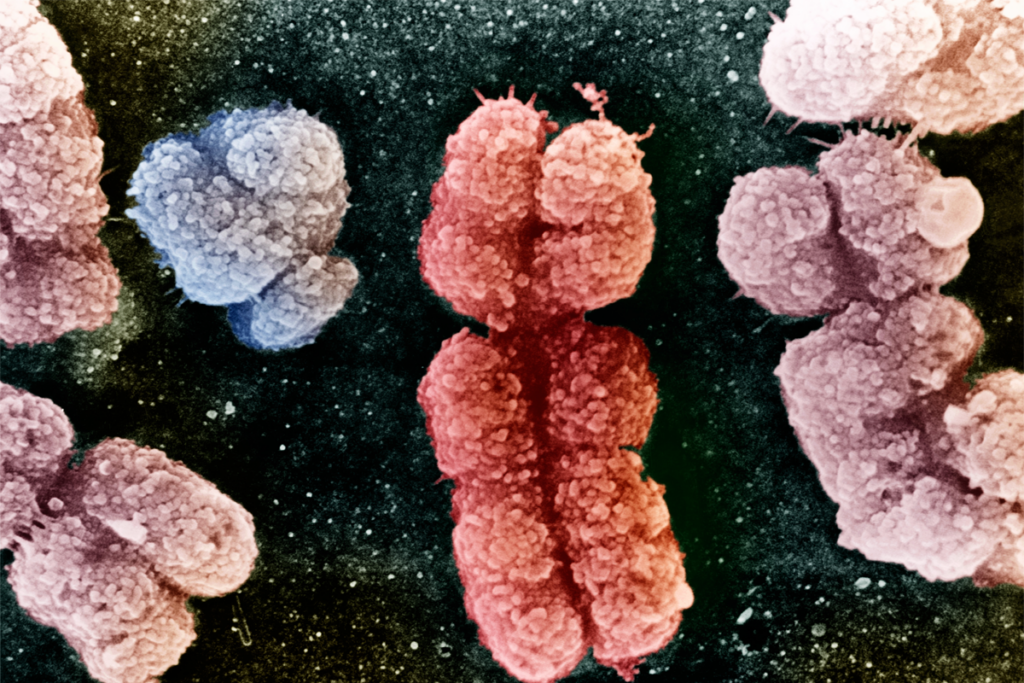Wherever science journalist and author Steve Silberman turned his protean mind, he illuminated perspectives that even those most embedded in the subject had often overlooked. His impulse to shine an empathetic light on marginalized people grew from his own experiences. Silberman, who died at age 66 on 29 August, lived as a young gay man at a time when society considered homosexuality pathological, something to diagnose and attempt to cure.
When Silberman began writing about the lives of autistic people, he deeply understood what it was like to be wished out of existence or targeted for a “cure.” This awareness informed the tone and themes of his bestselling 2015 book, “NeuroTribes: The Legacy of Autism and the Future of Neurodiversity,” which profoundly affected societal and scientific attitudes about autistic people.
In writing this foundational book, Silberman deployed lyrical storytelling to show how autistic people have always been part of the warp and woof of humanity. He emphasized that being autistic isn’t an existence of relentless deficits but one of mixed strengths and needs, as it is for all humans.
Silberman’s deftly told personal stories of autistic people portrayed a marginalized population caught in the glare of insensitive scientific research. His approach deeply affected some researchers themselves. “What Steve was able to do was to get the marginalized community to be heard by both scientists and a majority society,” says Christina Nicolaidis, professor in the School of Social Work at Portland State University and co-director of the Academic Autistic Spectrum Partnership in Research and Education.
Referencing a book chapter she co-authored with autistic colleague Dora Raymaker, Nicolaidis described a model in which “majority society,” the demographic with the most power, can interact with scientists and change how they work, but a minoritized population cannot.
The way Silberman amplified the voices of autistic people, she says, shifted the majority perspective and in turn shifted “how we do our science. It has these ripple effects.”
Silberman’s writing showed his superlative skill in compassionate persuasion through storytelling. “Yes, he was a science writer,” says Steve’s husband, Keith Karraker, a high school chemistry teacher. “But he also was a chronicler of people.”
S
teven Louis Silberman was born on 23 December 1957, the older of two children of educators and political activists Donald and Leslie Silberman. His tenacious interest in learning and chasing stories led him from his hometown of Ithaca, New York, to psychology studies at Oberlin College in Ohio and eventually to the San Francisco Bay Area.He earned a master’s degree in English literature at the University of California, Berkeley, and spent time at Naropa University in Boulder, Colorado, including as a teaching assistant to poet Allen Ginsberg. Eventually, Silberman made San Francisco his permanent home.
From that home base, he connected with people all over the world. I was lucky enough to be among those connections and to share a few quiet meals with Steve, including at Reverie Cafe, one of his favorite (and now closed) local haunts in San Francisco. He was supportive and candid, meticulous and funny, and I count myself among the fortunate many who crossed paths with him.
In 2001, as a Wired contributing editor, Silberman wrote an article that became the kernel of his tour de force, “NeuroTribes.” The piece, “The Geek Syndrome,” grew from Silberman’s multiple interactions with people living in the Bay Area who had mentioned autism to him. One had even told him that there was “an epidemic of autism” in the region.
Drawn ineluctably to dig into this claim, Silberman wrote searchingly about the history of autism diagnosis. The Wired article drew a tsunami of attention, some from people who eagerly urged Silberman to expand its themes into a book.
S
ilberman followed up on that suggestion, and more than a decade later, “NeuroTribes” debuted. Steeped in compassion and meticulously documented, the bestseller earned him accolades and awards, including the 2015 Samuel Johnson Prize for Non-Fiction.The book details a sweeping history of autism as a diagnosis, starting in the 18th century, and takes an empathetic view on being autistic then and now. Silberman traces this arc through excruciating stories of the brutalization of autistic people, almost always by researchers fixated on reproducing a nonexistent “norm” of human behavior.
In the book, Silberman sought to explain why researchers such as Leo Kanner, Ivar Lovaas and Bruno Bettelheim had perpetrated cruelty against autistic people. He emphasized the fundamental empathy gap between these scientists and the people they harmed. “NeuroTribes” also highlights important researchers who began bridge-building across that gap, including Lorna Wing and Uta Frith.
Controversially, Austrian pediatrician Hans Asperger received a largely positive treatment in “NeuroTribes.” While writing the book, Silberman heard rumors that Asperger had colluded with Nazis to send some children to their deaths—but Silberman’s efforts to obtain evidence were thwarted because the scholar involved was reserving that information for the authors of another book. “This whole experience has been a lesson to me in how competition for priority can distort the process of excavating history,” Silberman noted in an interview.
Silberman later updated “NeuroTribes” to reflect the unequivocal evidence tying Asperger to the deaths of children, and he served as a peer reviewer on a paper published in Molecular Autism detailing Asperger’s actions.
T
he enormous success of “NeuroTribes” pushed its neurodiversity-positive themes into the minds of mainstream society, including clinics and labs, where these ideas countered some common premises of autism research.Karraker recalls realizing how positively some researchers had responded to his husband while they were in Spain in 2023, where Silberman was set to give a talk at the International Congress on Autism in Murcia. “They clearly had a lot of respect for him,” Karraker says. “They definitely seemed to be treating him as someone who had an important perspective on what they were doing research about.”
“It influenced me pretty profoundly,” says Steve Phelps, professor of integrative biology at the University of Texas at Austin, who reviewed Silberman’s book for The Atlantic. Phelps works with prairie voles, which researchers rely on as a model for studying social bonds and attachment.
The voles were seen as a model for understanding autism’s origins because of perceptions—since debunked—that autistic people lack empathy and cannot form bonds, Phelps says. “His book was eye-opening for me because he was so thoughtful and compassionate and made the case that autism is a natural range of variation that’s always been around,” he says.
One scene from “NeuroTribes” stayed with Phelps, he says. In it, Jim Sinclair, an autistic autism rights activist, describes a video of an autistic person stimming as an example of that person trying to communicate. But when researchers describe the video, Phelps says, they clearly find the behavior “completely alien.” The contrast “shows that it’s the researchers who lack empathy and an ability to imagine what experience another person might be having,” Phelps says.
D
espite spending more than a decade immersed in the history and current experiences of autistic people, Silberman had other intensive interests. He was an adherent to Buddhism and a devotee of the Grateful Dead, contributing liner notes for boxed sets and co-authoring 1994’s “Skeleton Key: A Dictionary for Deadheads,” with David Shenk. At the time of his death, Silberman was deep into researching and writing his next book, focused on patients’ stories and societal influences around the quest to treat cystic fibrosis.He also was an avid consumer of other art forms, including television and film. He connected with filmmaker Todd Drezner after viewing Drezner’s neurodiversity documentary “Loving Lampposts,” named for Drezner’s autistic son’s love of lampposts. Silberman, who called the documentary a “masterpiece,” shared early drafts of “NeuroTribes” with the filmmaker, and the two bonded over their common ideas about autism.
Drezner, who also makes training and other videos for big corporations, says he sees the “majority society” influence of Silberman’s work among his clients today. Even in the “most risk-averse organizations, you can find some sort of program related to neurodiversity, whether that’s recruiting or support groups,” he says. “For something to permeate that widely among these kinds of organizations means that it’s gone really mainstream. That wasn’t the case when he was starting on the book. I think his book was one of the tipping points.”
“He loved that he was able to make a big difference, especially as it pertained to autism,” Karraker says. “Steve believed in making the world better for all of us.”






